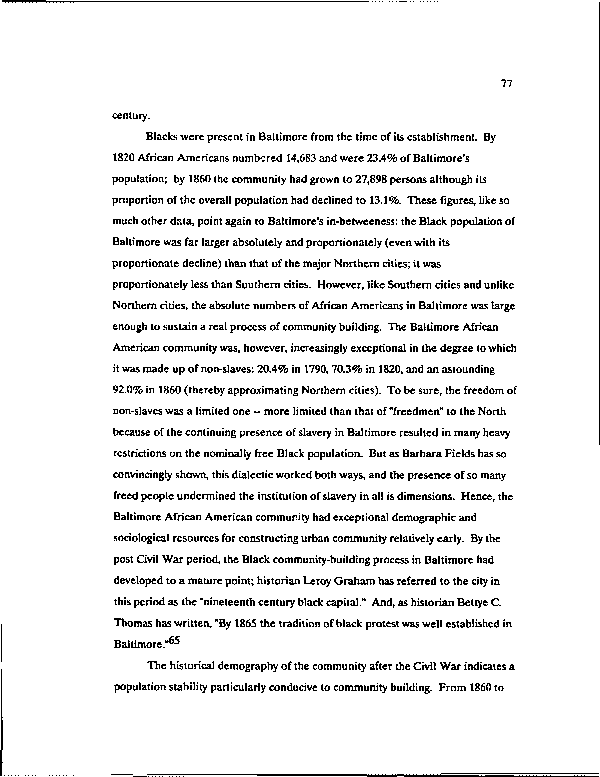|
77
century.
Blacks were present in Baltimore from the time of its establishment. By
1820 African Americans numbered 14,683 and were 23.4% of Baltimore's
population; by 1860 the community had grown to 27,898 persons although its
proportion of the overall population had declined to 13.1%. These figures, like so
much other data, point again to Baltimore's in-betweeness: the Black population of
Baltimore was far larger absolutely and proportionately (even with its
proportionate decline) than that of the major Northern cities; it was
proportionately less than Southern cities. However, like Southern cities and unlike
Northern cities, the absolute numbers of African Americans in Baltimore was large
enough to sustain a real process of community building. The Baltimore African
American community was, however, increasingly exceptional in the degree to which
it was made up of non-slaves: 20.4% in 1790, 70.3% in 1820, and an astounding
92.0% in 1860 (thereby approximating Northern cities). To be sure, the freedom of
non-slaves was a limited one - more limited than that of "freedmen" to the North
because of the continuing presence of slavery in Baltimore resulted in many heavy
restrictions on the nominally free Black population. But as Barbara Fields has so
convincingly shown, this dialectic worked both ways, and the presence of so many
freed people undermined the institution of slavery in all is dimensions. Hence, the
Baltimore African American community had exceptional demographic and
sociological resources for constructing urban community relatively early. By the
post Civil War period, the Black community-building process in Baltimore had
developed to a mature point; historian Leroy Graham has referred to the city in
this period as the "nineteenth century black capital." And, as historian Bettye C.
Thomas has written, "By 1865 the tradition of black protest was well established in
Baltimore."65
The historical demography of the community after the Civil War indicates a
population stability particularly conducive to community building. From 1860 to
|

